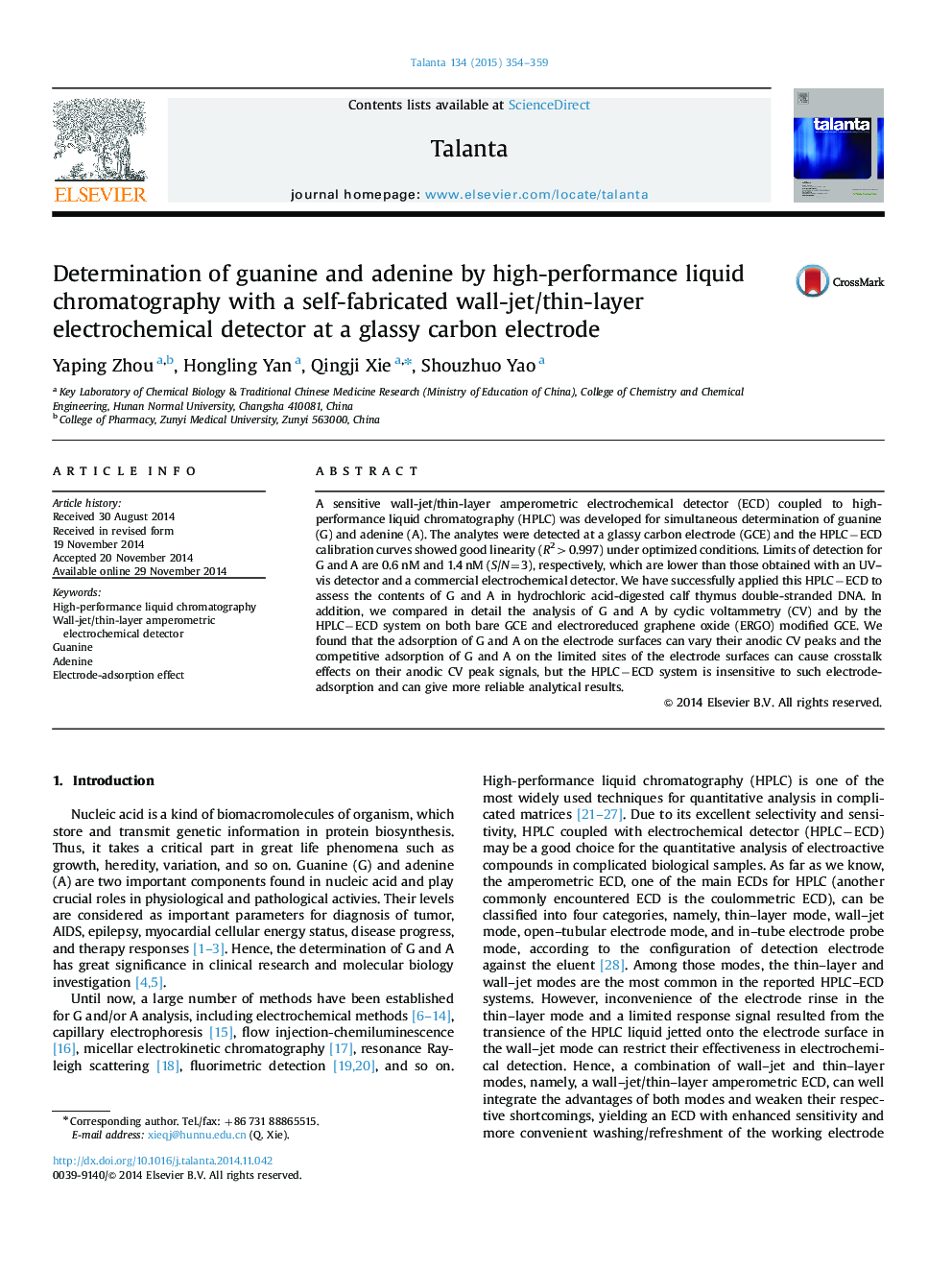| Article ID | Journal | Published Year | Pages | File Type |
|---|---|---|---|---|
| 1244090 | Talanta | 2015 | 6 Pages |
•A wall-jet/thin-layer amperometric ECD coupled to HPLC.•High analytical performance for trace analysis of purine bases.•Negative effects of competitive electrode adsorption of purine bases on their conventional electroanalysis.•Favorable insensitivity of HPLC-ECD to their electrode-adsorption.
A sensitive wall-jet/thin-layer amperometric electrochemical detector (ECD) coupled to high-performance liquid chromatography (HPLC) was developed for simultaneous determination of guanine (G) and adenine (A). The analytes were detected at a glassy carbon electrode (GCE) and the HPLC−ECD calibration curves showed good linearity (R2>0.997) under optimized conditions. Limits of detection for G and A are 0.6 nM and 1.4 nM (S/N=3), respectively, which are lower than those obtained with an UV–vis detector and a commercial electrochemical detector. We have successfully applied this HPLC−ECD to assess the contents of G and A in hydrochloric acid-digested calf thymus double-stranded DNA. In addition, we compared in detail the analysis of G and A by cyclic voltammetry (CV) and by the HPLC−ECD system on both bare GCE and electroreduced graphene oxide (ERGO) modified GCE. We found that the adsorption of G and A on the electrode surfaces can vary their anodic CV peaks and the competitive adsorption of G and A on the limited sites of the electrode surfaces can cause crosstalk effects on their anodic CV peak signals, but the HPLC−ECD system is insensitive to such electrode-adsorption and can give more reliable analytical results.
Graphical abstractFigure optionsDownload full-size imageDownload as PowerPoint slide
